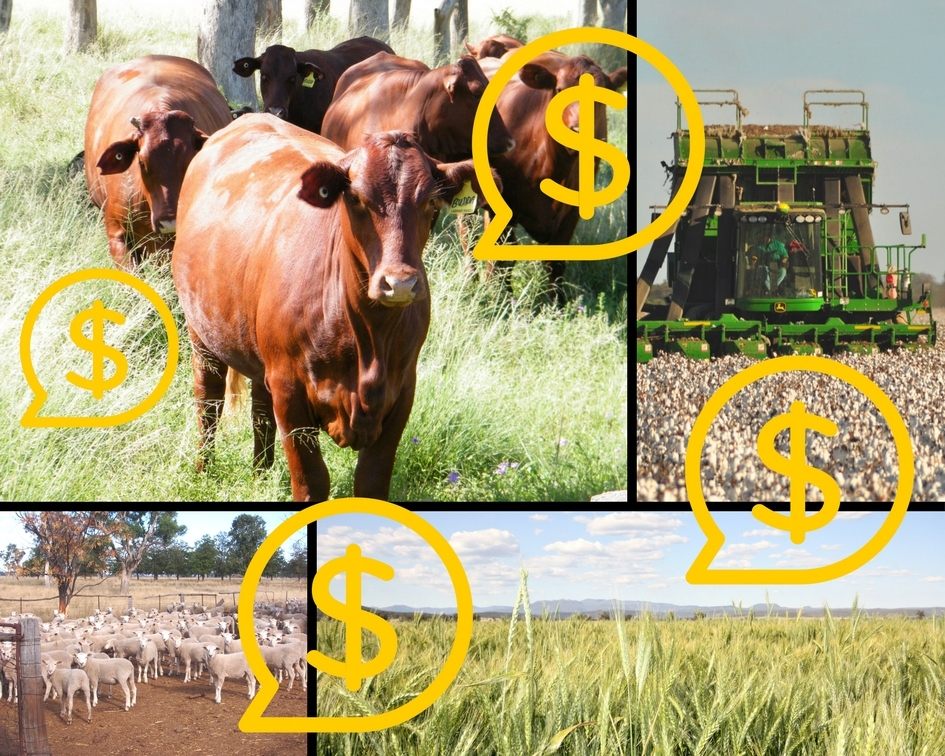The year that was: Record agricultural production for 2016-17
If you need to inject a bit of joy into your December, then the latest figures on Australian agricultural production should do the trick. What a year!

Despite what could be described as a stressful year for farmers, with well below average spring rainfall and a few stinging commodity price dips, the latest ABARES data on Australian agricultural production for 2016-17 is impressive. The gross value of farm production came in at a record $63 billion, with beef ($13.1 billion) and wheat ($6.2 billion) the top two commodities. The highest revenue crop per tonne produced and per hectare sown in 2015-16 was cotton, with sugar cane the highest yielding per hectare.
The bad news from the national commodities forecaster is that this record peak in production is expected to remain unmatched for the next five years, slipping 7% in 2018. It pays to remind ourselves that the predicted national gross production values of $59 billion are still higher than the $54 billion average in the five years leading up to 2016-17. And while the overall trends for national agriculture production will decline next year, livestock production continues to claw back its former glory, with the bullish increase set to continue due to rising values of milk, wool and lamb.
Other ABARES data shows agriculture continues to maintain a strong place in the Australian economy. It accounted for 15% of Australia’s total exports in 2016-17, with exports to China topping the charts at just under $10 billion. Exports to the US were worth approximately $5 billion and Japan, Korea and Indonesia fell in closely behind to make the top five export trading partners for Australian agricultural products. Beef was the top export commodity worth just over $8 billion to the economy, with wheat the next biggest export product worth approximately $5 billion.
Export earnings are forecast increase for beef and veal (up 12 per cent), wool (20 per cent), cotton (18 per cent), wine (12 per cent), dairy products (7 per cent), lamb (7 per cent), live feeder/slaughter cattle (5 per cent) and mutton (26 per cent). In Australian dollar terms, export prices for barley, butter, cheese, lamb, mutton, sorghum, wheat, wine and wool are also forecast to increase in 2017-18. Export prices for beef and veal, canola, chickpeas, cotton, live feeder/slaughter cattle, sugar and rock lobster are forecast to fall.
ABARES names a few economic assumptions underlying its latest set of commodity forecasts, including that world economic growth is assumed to be 3.5 per cent in 2017 and 3.6 per cent in 2018. The Australian dollar is also assumed to average US77 cents in 2017-18, higher than the average of US75 cents in 2016-17.
in Latest News
Share this post
Posts this year
Archived Posts
- Posts in 2024
- Posts in 2023
- Posts in 2022
- Posts in 2021
- Posts in 2020
- Posts in 2019
- Posts in 2018
- Posts in 2017
- Posts in 2016